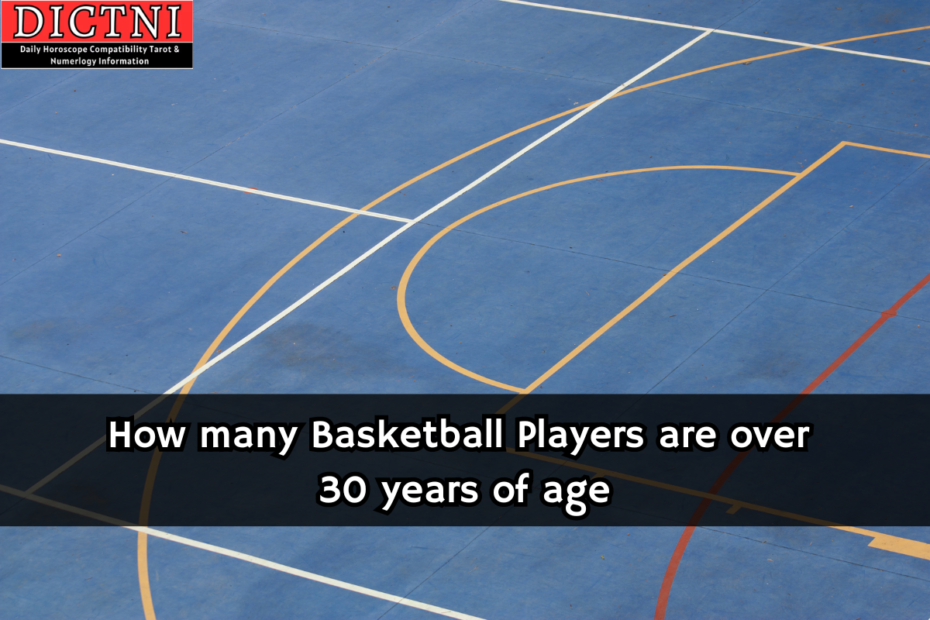Introduction
In the dynamic realm of professional basketball, where youthfulness and agility are frequently highly valued, an incredible group of athletes has not only defied expectations but also flourished long into their 30s. This article highlights how basketball players over 30 continue to have a big impact on the sport by examining their experiences, difficulties, and contributions.
Legendary Figures & Their Extended Careers
Michael Jordan: who played basketball from 1963 to 2003, is recognized as one of the all-time greats and continued to play into his late 30s. After a brief hiatus, Jordan returned to the NBA and helped the Chicago Bulls win three more titles, cementeding his status as a legendary player.
John Stockton’s: John Stockton was a master of the point guard position who played until he was 41 years old. He was a playmaker and had a high basketball IQ. Stockton’s sustained success with the Utah Jazz is evidence of his enduring skill set and commitment to the sport.
Karl Malone: Born in 1963, Karl Malone, also referred to as “The Mailman,” kept up his impressive play on the court far into his 30s. The big forward played until the age of 40, demonstrating his scoring skills and resilience as he pursued an elusive NBA championship.
Calculating Players Who Are Over 30 Years Old
Players older than thirty are now considered an important and valued component of the NBA as it develops. Famous athletes like LeBron James, Kevin Durant, and James Harden are currently playing fantastically well into their 30s, defying the belief that becoming older prevents athletes from reaching their full potential.
LeBron James (born 1984): Frequently brought up in conversations about the best NBA players ever, James is still performing at a high level long into his 30s. Because of his adaptability, athleticism, and basketball IQ, he has been able to contribute to several NBA championships with his skills.
Kevin Durant (born 1988): Kevin Durant, who is renowned for his offensive versatility and scoring prowess, has made a smooth transition into his 30s and is still regarded as one of the league’s best players. Durant’s effect extends beyond scoring, with his leadership and basketball IQ playing vital roles.
James Harden (born 1989): A scoring machine and outstanding facilitator, James Harden has entered his 30s with a reputation as one of the league’s most dynamic players. Harden’s offensive skills, particularly his scoring and passing, continue to be vital to his team’s success.
Stephen Curry: a 1988 native: Stephen Curry, a pivotal character in the contemporary era of basketball, has revolutionized the sport with his remarkable playmaking and shooting abilities. Curry, who is in his 30s, is still a vital member of the Golden State Warriors and a prime example of the influence senior players can have on the team.
Case Studies: Influential Individuals Over 30
Dirk Nowitzki (born in 1978): The legendary German player had a successful career that lasted well into his 40s. Nowitzki, a seven-footer with a distinctive scoring style, demonstrated the lasting impact of older players on the Dallas Mavericks and the game in general.
Chris Paul: Chris Paul was born in 1985. He has remained successful far into his 30s and is well-known for his leadership and playwriting. He is an important player for the Phoenix Suns because of his leadership, offensive facilitation, and game management skills.
Dwyane Wade: He was born in 1982. Dwyane Wade, a three-time NBA champion, demonstrated his leadership and scoring prowess while playing until he was 37 years old. Wade’s career impact on the Miami Heat and other teams served as a testament to the importance of experience.
Kyle Lowry (born 1986): As a point guard, Kyle Lowry has remained a vital player to his teams in his 30s. Known for his determination, defensive ability, and three-point shooting, Lowry’s impact on the Toronto Raptors and the Miami Heat shows the worth of older players.
Conclusion
Basketball players over 30 have proven time and time again that age does not always equate to decreased skill, influence, or impact on the floor. These athletes, who range from modern-day superstars like LeBron James and Kevin Durant to historical icons like Michael Jordan and John Stockton, perfectly depict the perseverance and value of seasoned players in the professional basketball league.
Players older than thirty continue to play a crucial role in the NBA’s ongoing evolution. Their influence goes beyond the scoreboard, impacting team chemistry, developing young players, and making a lasting impression on the sport. In honoring these athletes, we honor not just their physical prowess but also the insight and tenacity that characterize their enduring impact on the court.
